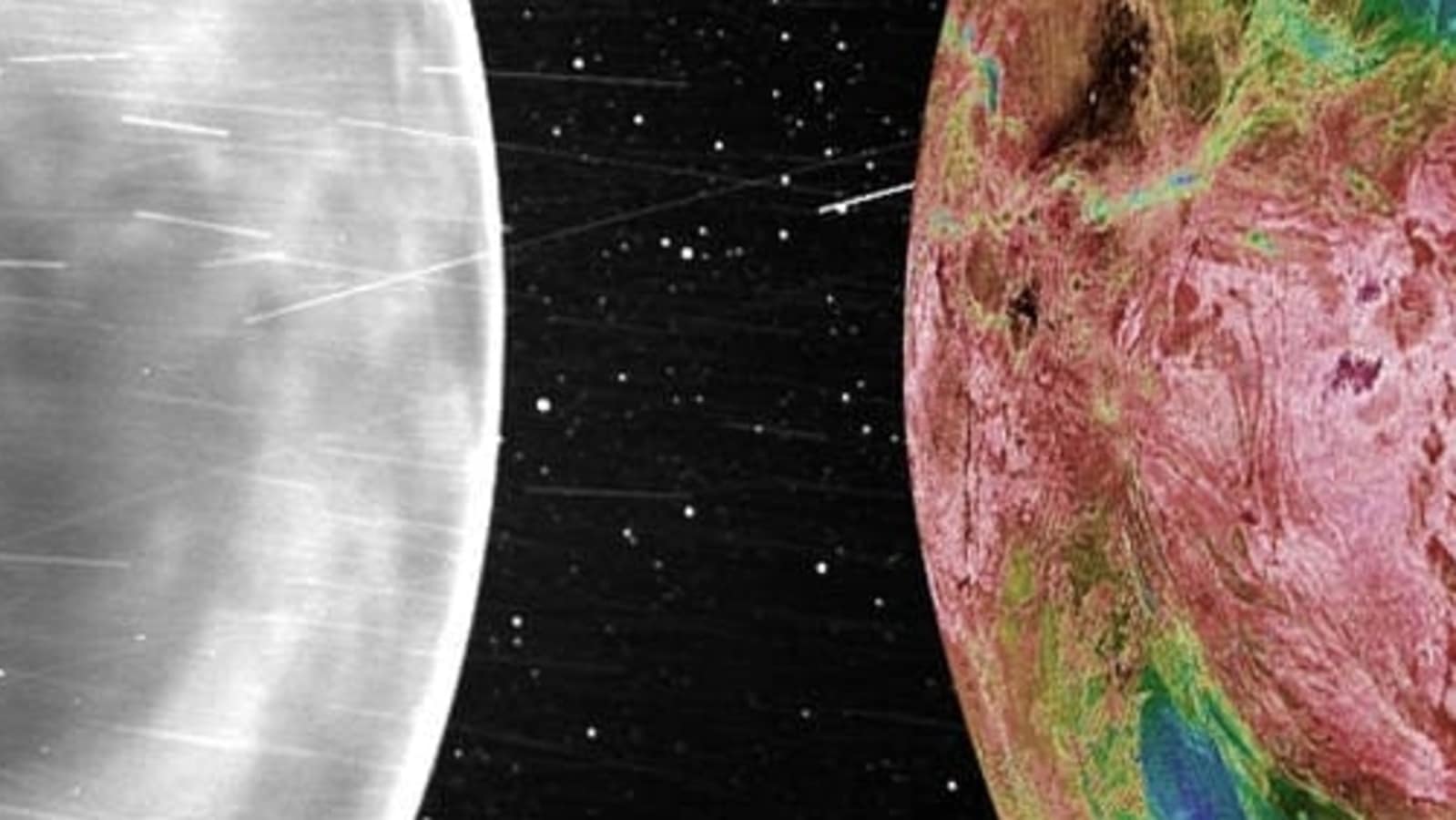Historic! NASA Parker Solar Probe does a FIRST on Venus
For the first time ever, Venus has been revealed in all its colourful glory! This is courtesy the NASA Parker Solar Probe Venus photos

For the first time in history, we can see the planet Venus in Color, thanks to NASA Parker Solar Probe! The Wide-field Imager for Parker Solar Probe (WISPR) by the American space agency has managed to take pictures of the surface of Venus revealing stunning continents, plains, plateaus and even a layer of Oxygen. The probe took the image in “wavelengths of the visible spectrum” so, the images are exactly how a human eye would see it. Earlier we only had boring gray pictures of the planet due to the dense atmosphere and toxic clouds that surrounded the planet. However WISPR was able to bypass that.
The Venus photos were taken by the Parker Solar Probe on the dark side of the planet to avoid sunlight which makes the clouds reflective and obstructs any images of the surface. The images highlight distinctive structures that can be differentiated into continents, plains and plateaus. WISPR used infrared sensing to determine which structures were higher and lower based on its heat signature. According to NASA, the higher ones were recorded with bluer shades as they were cooler and the ones in the lower regions were captured in red as they were hotter.
NASA reveals never before seen images of Venus
“We're thrilled with the science insights Parker Solar Probe has provided thus far. Parker continues to outperform our expectations, and we are excited that these novel observations taken during our gravity assist maneuver can help advance Venus research in unexpected ways,” said Nicola Fox, division director for the Heliophysics Division at NASA Headquarters in NASA's post.
These Venus images are also expected to shed more light on what happened on the planet in the past. It has been theorized that Venus used to be habitable in the past, with strong chemical prints on the atmosphere suggesting both presence of water and a livable climate to support life. However, today Venus is completely different. It has extreme temperatures, toxic clouds and an overly dense atmosphere which makes it extremely inhospitable. And that is why Venus is so interesting to us. Scientists believe that understanding Venus' evolution will open a window to the future of Earth and help humanity to save our planet from a fate like that of Venus.
Earth has been dealing with its own share of climate change issues. And if we are headed to where Venus is today, then we need to understand why it happened and how we can reverse it. And that is what NASA has been trying to understand. Parker Solar Probe has taken us one step closer to that journey.
Catch all the Latest Tech News, Mobile News, Laptop News, Gaming news, Wearables News , How To News, also keep up with us on Whatsapp channel,Twitter, Facebook, Google News, and Instagram. For our latest videos, subscribe to our YouTube channel.





























